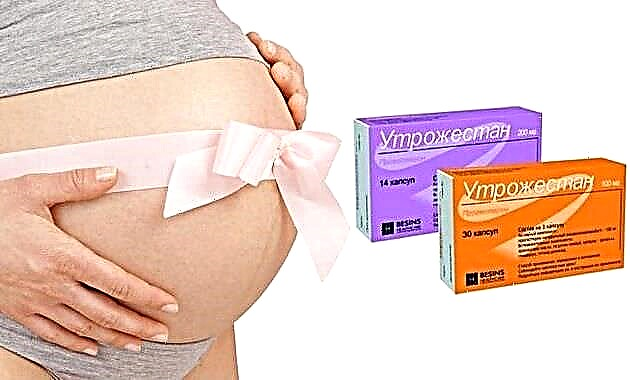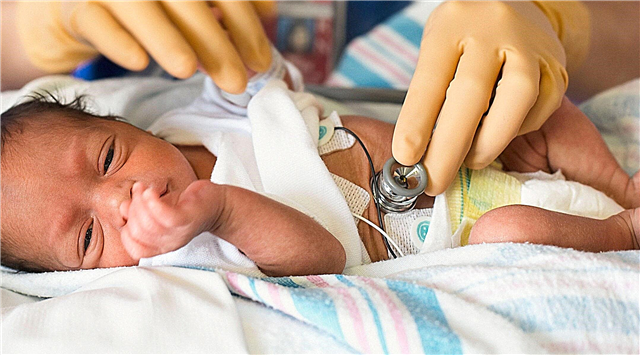
Recently, more and more pediatricians are diagnosed with atopic dermatitis. This problem is becoming truly universal, the number of sick children is growing rapidly, and the course of the disease itself becomes more severe. Treatment of children's eczema (this is the second name for atopic dermatitis) can be either medication, traditional, or based on folk remedies. A combination of the two is most effective. In this article, we will look at which remedies from the arsenal of alternative medicine relieve the condition of the child.

Symptoms and Signs
Atopic dermatitis, which many parents call "diathesis", is not a skin condition, as moms and dads mistakenly believe. The problem lies in an allergic reaction to one or another antigen. Most often, the real reason lies in food allergies, in reactions to blooms, pollen, animal dander, and medicines. There are also cross-allergies when there are several reasons.
Therefore, atopic dermatitis is difficult to consider as an independent disease. Rather, it is a metabolic disorder, when proteins-antigens, leaving the child's body through sweat, urine or exhaled air through the lungs, causes a certain reaction.

It is not difficult to recognize such a problem in a child:
- He gets a rash. It can be red, pink, with or without watery "heads". Sometimes the rash is so dense that a hard crust, scab is formed. The locations of the rash are the face (especially the cheeks and forehead), arms, legs (especially infantile skin folds), butt. Atopic dermatitis is extremely rare on the chest and back.
- The child has severe itching. The areas of the skin affected by the rash itch unbearably and sometimes even interfere with the normal sleep of the crumbs. Older children are able to talk about their feelings, babies are not. They will cry and scream, behave restlessly even when full, even if they really want to sleep.
- Indigestion, lack of appetite.

And now let's listen to the issue where Dr. Komarovsky touches on the topic of dermatitis in children, including atopic.
Doctors say that there must be appropriate genetic prerequisites for the occurrence of atopic dermatitis. If a parent has an allergy, the child's chances of encountering this problem are high. The disease usually affects children from birth to one year old. Babies who are breastfed by their mothers suffer from this disease less often than crumbs who feed on milk formulas.
In most cases, according to the well-known pediatrician Yevgeny Komarovsky, atopic dermatitis in children goes away with time on its own, that is, the child "outgrows" this disease. But there is a small percentage of children in whom this diagnosis persists throughout their lives.

When is it impossible to do with folk methods?
There are actually few such situations. Qualified treatment with medicines, sometimes even in a hospital, is required when atopic dermatitis in a child is extremely difficult, and relief does not come after home treatment on its own. Traditional therapy is indicated if the area of the affected skin is extensive, and the age of the crumbs is small, it is better to alleviate the child's suffering in this situation with the help of pharmacy agents prescribed by the doctor.

If a child often has relapses of the disease, it is also not worth treating them with folk remedies, the baby needs a thorough medical examination to identify the true cause of the rash and itching.
Alternative treatment is contraindicated in children under one year old, as it can aggravate the situation. An infant should be treated exclusively by a doctor.

Any folk remedies for atopic dermatitis in no way cure the problem, they only temporarily relieve the child's condition, reduce discomfort. Although doctors are increasingly saying that no treatment for childhood eczema, in principle, is required, it is enough to eliminate the source of the allergy, create favorable environmental conditions for the little one and follow a hypoallergenic diet.
According to established practice, doctors usually prescribe ointments and gels to children with a complex course of atopic dermatitis, which belong to the category of glucocorticosteroids. They alleviate the skin manifestations of the disease; in case of relapse, the doctor may recommend antihistamines.

Some doctors are sure that babies with childhood eczema need additional immune support and prescribe immunomodulators. This appointment evokes the protest of the majority of modern scientists and doctors, who believe that any violent effect on the immunity of newborns and babies is only harmful.

And now an interesting video from our user how they coped with atopic dermatitis in babies.
Folk remedies
Traditional remedies for childhood eczema are well known to our grandmothers, some 30-50 years ago they were widely and everywhere used.

St. John's wort
It is the most popular itching remedy among parents. Babies from 1 year old can make lotions with St. John's wort infusion (a tablespoon of dry grass per 200 g of boiled water). For children from 3 years old, you can prepare a stronger drug from St. John's wort. To do this, melt 60 g of butter in a water bath, let it cool slightly and add about 20 ml of fresh St. John's wort juice to it. Store the mixture in the refrigerator. Apply topically to affected areas twice a day.

Glycerin with milk
To make a moisturizing ointment, you need fresh milk, glycerin, and rice starch. All ingredients must be taken in equal proportions. In a glass or ceramic container, you need to mix everything thoroughly until smooth. Store in the refrigerator, apply to the affected skin once a day, before bedtime. Leave the ointment overnight.

Potatoes
Regular potatoes, which are in every home, need to be washed, peeled and grated. Fold the gruel in gauze and apply to the sore spot. According to parents, this method is highly effective and allows you to save your child from a rash in the shortest possible time. However, doctors warn: potato starch, which is rich in such medicinal juice, can be an independent allergen, and quite strong.

Kalanchoe
The juice and pulp of this houseplant are mixed with honey in a proportion that implies the presence of 2 parts of vegetable gruel and one part of honey. Store the mixture in the refrigerator. Apply to reddened itchy areas several times a day. Doctors are categorically against such a recipe, since honey in a child predisposed to allergies, which, of course, is a baby diagnosed with atopic dermatitis, can cause a sharp deterioration in well-being.

Celery root
Juice should be squeezed out of this plant (about 50 grams). Mix the juice with a small pinch of salt and a few drops of apple cider vinegar. With such a mixture, you can make lotions on sore spots. Keep it for about five minutes, and it is recommended to repeat the procedure every 3-4 hours.
The juice squeezed from celery root can also be taken internally. But for children under 3 years of age, such treatment is categorically contraindicated. Babies under 6 years old with an exacerbation of childhood eczema can be given 20 mg of juice twice a day before meals. Children over 6 years old - 40 mg.

Cucumber
Squeezing an ordinary fresh cucumber is not difficult. The resulting juice can quite successfully remove peeling and inflammation on the baby's skin, as well as moisturize it. Treat areas with a rash every two hours. Fresh juice should be used for each procedure.

Chamomile and linseed oil
A teaspoon of dry chamomile inflorescences (they can be bought at a pharmacy in the form of a ready-made herbal collection), mix with 100 gr. linseed oil. Hold the mixture in a water bath for about 20 minutes, cool and strain. With the resulting preparation, lubricate the irritated itchy skin of the child three times a day. It is advisable to avoid contact of oiled skin areas with the fabric of clothing, since the chamomile-linseed oil substance is not washed off at all.

Pumpkin and its juice
This recipe is one of the most ancient and reliable. It is easy to prepare and very effective. You can simply wipe the sore skin areas with raw pumpkin pulp, and to achieve a faster action, it is better to treat a child's rash with juice that can be squeezed out of the pumpkin pulp. Procedures can be performed every two hours until relief occurs.

Geranium
It is a houseplant that helps with many skin ailments. Leaves, flowers and stems of geraniums should be chopped with an ordinary kitchen knife and mixed with sunflower oil (50 grams of plant matter per 150 grams of oil). Such an ointment should be insisted for at least five days. After that, the child's skin is treated with it 3-4 times a day.

Aloe
The fleshy, juicy leaves of this well-known plant must be cut off and kept in the refrigerator for 2-3 hours. Then take them out and chop finely. Add two tablespoons of peach or almond oil to the resulting gruel. The resulting product can be used to treat severe and extensive rashes in childhood eczema. According to parents and doctors, such a remedy reduces the formation of new rashes and softens the already affected skin. The itching goes away already 2-3 days after the start of the procedure.
Pure aloe juice can also be used to lubricate the redness on your baby's skin.

In addition, parents of children suffering from atopic dermatitis will not hurt to have tar soap at home, a pharmacy collection of a string (for bathing), a collection of chamomile flowers (for making phytovannas), as well as special herbal teas for children with allergic inclinations.
The danger of self-medication
Self-medication for atopic dermatitis can worsen a child's condition. This is real if, to eliminate the rash and itching, parents use herbal remedies that will additionally have an allergic effect.
The reaction of a child with childhood eczema to a particular herb or root is unpredictable. That is why it is important to examine the baby with doctors and find out what exactly he is allergic to.

Now let's listen to a lecture on proper skin care for atopic dermatitis
What can’t be done?
- The skin with children's eczema is quite dry, so in no case should you cauterize the rash with alcohol and alcohol-containing liquids. This will dry out and irritate the affected areas even more.
- Do not peel off dry scabs or squeeze out a rash with watery heads. This can lead to infection, as bacteria can enter through damaged skin and cause severe inflammation.
- When bathing, do not rub the eczema with soap or other detergents, this may contribute to an additional reaction with the components of cosmetics. It is advisable not to wet the affected areas too much.

Tips
- Treatment of atopic dermatitis always, in all cases without exception, should begin not with lapping and compresses, but with correcting the baby's diet. The artificial man should reduce the concentration of the mixture. If the baby is breastfed, the mother should eat less fat to reduce the fat content of breast milk.
- A child who, due to age, eats everything, should exclude nuts, chicken eggs, soy, citrus fruits and fish from the diet and significantly limit the use of cow's milk and dairy products, baked goods.
- Access to allergens should be excluded during treatment. Baby clothes should be made of natural fabrics without factory textile dyes. It is not worth cleaning with chlorine-containing products, all cosmetics for the child should be marked "hypoallergenic". It is advisable to give to relatives and friends (at least temporarily) pets - cats and dogs.
- Do not overfeed a child with atopic dermatitis. Dr. Evgeny Komarovsky talks about this in more detail. In addition, you should be careful about the child's stool. The bowel movement of an allergenic child should be regular, daily. If problems arise, parents should consider using a mild lactulose laxative such as Duphalac.




